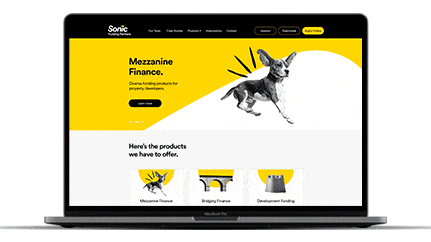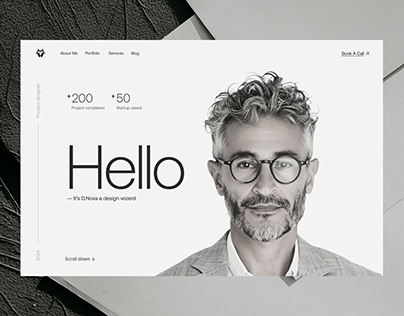Boost Your Brand Name With Magnificent and User-Friendly Internet Site Design
In today's digital landscape, a well-crafted internet site offers as the cornerstone of an effective brand technique. By incorporating aesthetic appeal with intuitive navigating, businesses can enhance user experience and foster enduring connections. As we check out the vital elements of effective site layout, it becomes clear that the stakes are higher than ever before.
Significance of Web Site Layout
Website style is crucial in today's electronic landscape, where about 75% of customers judge a company's reputation based upon its site looks. A well-designed web site not just captures attention but additionally promotes trust fund and encourages individual interaction. In an era where on-line communications are extremely important, organizations can not pay for to overlook the influence of layout on user understanding and habits.
Effective website style works as the foundation for a brand's on-line visibility, influencing individual experience and retention prices. An aesthetically attractive and useful site can distinguish a brand from its competitors, improving its market placement. Moreover, a thoughtfully developed site can improve navigation and improve the accessibility of information, which is important for keeping visitors and minimizing bounce prices.
Furthermore, the value of internet site style expands past aesthetic appeals; it encompasses the combination of receptive layout principles that satisfy numerous devices. As mobile use continues to increase, guaranteeing that a site operates perfectly throughout all systems is vital for getting to a more comprehensive target market. Finally, prioritizing site design is not simply an issue of aesthetic allure; it is a strategic imperative that directly affects a service's success in the electronic globe.
Secret Components of User-Friendly Design

Receptive formats guarantee that the internet site operates effortlessly across different devices, from desktops to smart devices. This versatility is important in today's digital landscape, where users accessibility sites through numerous platforms.
Furthermore, clear phone call to action guide customers toward desired outcomes, whether that be making an acquisition, enrolling in a newsletter, or speaking to business. These triggers should be plainly presented and easily identifiable, making use of contrasting shades and compelling language.
Moreover, accessibility features, such as alt text for images and keyboard navigation choices, are vital in making the website usable for individuals with handicaps. By integrating these key components, businesses can develop an easy to use web site that not just improves site visitor contentment however likewise encourages interaction and conversions.
Aesthetic Appeal and Branding
Visual allure plays a crucial role in developing a brand's identity and fostering a connection with individuals. A properly designed internet site mirrors the core values and character of a brand name, developing an immediate perception that can affect user assumption and engagement. Aesthetic elements such as color pattern, typography, and view website images job with each other to connect the essence of a brand, making it remarkable and identifiable.
Regular aesthetic choices across all systems enhance brand name identification and add to a cohesive experience for users. As an example, a high-end brand name might choose for a minimalist layout with muted colors and stylish fonts, while a dynamic start-up might welcome bold colors and lively graphics. These decisions not only communicate the brand's message yet likewise evoke certain emotions and associations that resonate with target audiences.
Furthermore, visual charm can separate a brand name in a saturated market. An aesthetically striking site can bring in interest and invite expedition, setting a brand name aside from competitors. Eventually, the assimilation of visual allure within web site layout is essential for building brand commitment and trust fund, as it works as more information a foundation for a strong, long-term relationship between the brand and its target market.

Enhancing User Experience
A well-crafted style not only captures focus but also significantly boosts customer experience, guaranteeing visitors can navigate a site effortlessly and fulfillment. Secret elements such as instinctive navigating, receptive formats, and clear phone calls to activity are crucial in assisting individuals via the site flawlessly. When customers can situate details swiftly and effortlessly, their general contentment boosts, promoting a positive partnership with the brand name.
Moreover, incorporating aesthetic hierarchy assists to direct individuals' emphasis to the most vital material, making it simpler for them to comprehend the website's offerings. Consistent use colors, typefaces, and imagery strengthens brand identification while producing a natural experience that reverberates with site visitors.
Furthermore, maximizing load times is important; sluggish websites can lead to stress and higher bounce prices. Prioritizing mobile-friendliness makes sure that users accessing the website from different devices have a consistent experience, better boosting usability.
Measuring Success and Effect
Success in web site design can commonly be assessed via various metrics that expose the effect of customer experience on site visitor behavior. Key efficiency indications (KPIs) such as bounce rate, ordinary session duration, and conversion rate offer important understandings into how properly an internet site involves its customers. Website Design. A high bounce price click might indicate that site visitors are not locating what they anticipate, signaling the need for layout enhancements or material improvement
Additionally, tracking user interactions through devices like heatmaps and session recordings can show exactly how visitors navigate the website, highlighting areas that require optimization. As an example, if users constantly ignore a call-to-action switch, it might need rearranging or redesigning for far better visibility.
Moreover, collecting customer comments with studies or use screening can help identify discomfort factors in the customer journey. This qualitative data matches quantitative metrics, providing an alternative view of website efficiency.
Eventually, measuring success and effect in website design involves a combination of logical devices and customer insights. By continually examining these metrics, services can make educated choices that enhance customer experience and foster brand loyalty.
Final Thought
In conclusion, efficient web site style serves as an important component for brand name altitude in a competitive electronic landscape. By focusing on aesthetic charm, intuitive navigating, and responsiveness, services can produce engaging systems that foster trust fund and improve user experience. The combination of clear telephone calls to activity and optimized performance better adds to boosted conversion rates. Eventually, a well-executed web site style not just distinguishes a brand name but additionally substantially influences its online visibility and success.